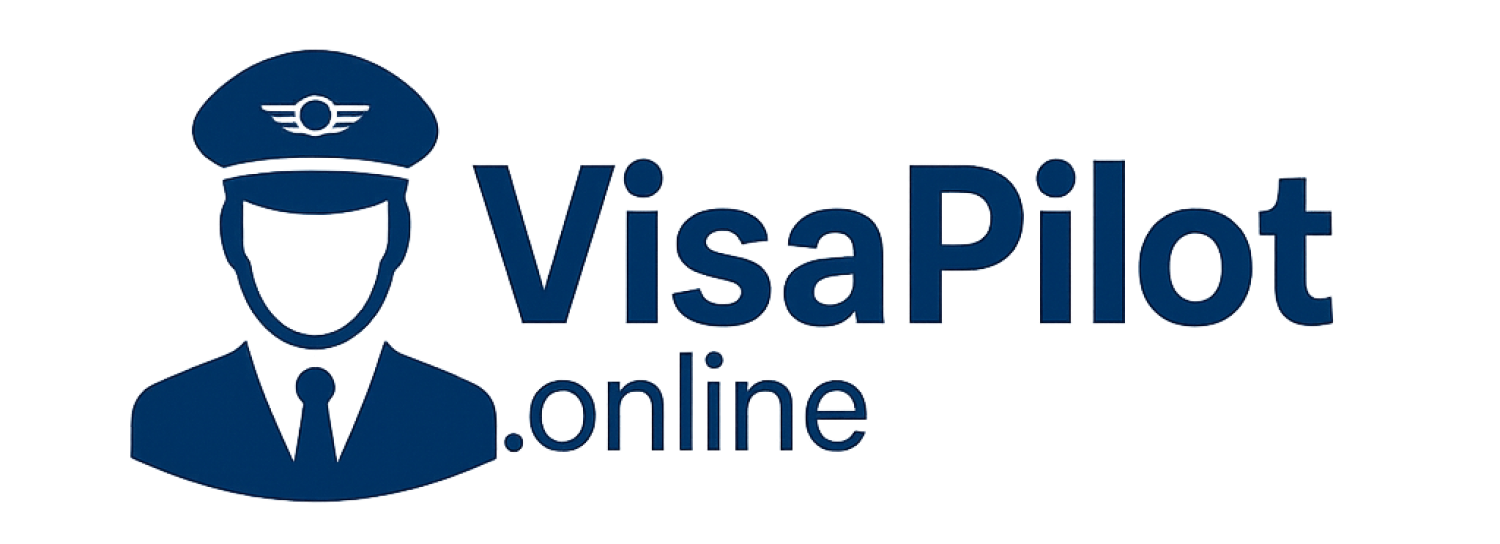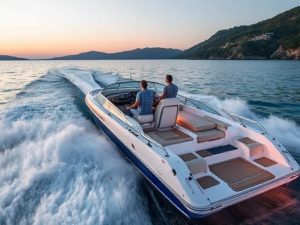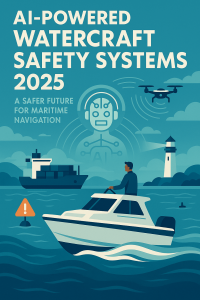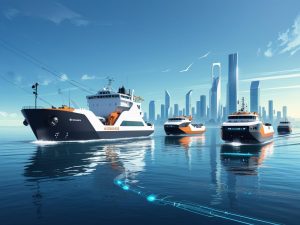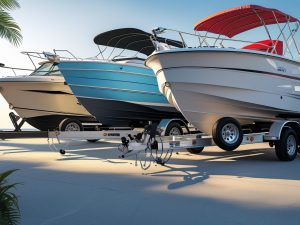The maritime world is undergoing a technological revolution. From container ships to recreational boats, artificial intelligence (AI) is transforming how vessels operate. In 2025, boats and watercraft equipped with AI navigation systems are no longer concepts of the future—they are here, actively changing how we travel, fish, transport goods, and explore the seas.
AI has already made waves in industries like aviation, automotive, and manufacturing. Now, it is reshaping marine navigation by improving safety, efficiency, and autonomy. Whether you’re a boat enthusiast, an investor, or a tech lover, understanding how AI navigation is revolutionizing marine travel is crucial.
This in-depth article explores everything you need to know about boats and watercraft with AI navigation systems in 2025—including how they work, their benefits, challenges, current models, and future trends.
What Is an AI Navigation System in Watercraft?
An AI navigation system uses machine learning, real-time data, GPS, sensors, and autonomous control technologies to guide boats safely and efficiently. These systems mimic human decision-making, helping vessels avoid obstacles, navigate changing sea conditions, and even make route adjustments based on weather forecasts.
AI-powered navigation is commonly integrated with:
-
Autonomous control modules
-
Computer vision
-
LiDAR and radar systems
-
GPS and geofencing
-
Predictive maintenance algorithms
-
Remote diagnostics and control
AI allows boats to interpret environmental data, predict collisions, detect anomalies, and make informed decisions without human intervention.
Benefits of AI Navigation Systems in Boats (2025)
1. Enhanced Safety
AI can detect nearby vessels, shallow areas, buoys, and other obstacles in real-time, reducing the risk of collisions and grounding.
2. Fuel Efficiency
Smart route planning reduces fuel consumption by optimizing the most efficient path, considering tides, wind, and current.
3. Autonomous Operation
AI enables boats to navigate without a captain or crew, ideal for cargo delivery, research, or remote surveillance.
4. Real-Time Monitoring
Sensors provide constant feedback to onboard AI, enabling quick decision-making and corrective actions.
5. Cost Savings
With fewer crew members required, automated vessels cut down on labor costs while enhancing operational efficiency.
6. Environmental Protection
AI systems help avoid marine protected zones and detect oil leaks or pollution risks, contributing to sustainability.
Use Cases for AI-Powered Boats and Watercraft
1. Autonomous Cargo Ships
Companies like Rolls-Royce, Yara, and IBM are testing unmanned cargo vessels with AI-powered navigation, designed to transport goods with precision and safety.
2. Fishing Vessels
Smart boats assist commercial fishing operations by locating fish schools, avoiding protected species, and maximizing harvests while staying compliant with regulations.
3. Search and Rescue Missions
Autonomous watercraft can be deployed for rescue operations in disaster zones, rough seas, or inaccessible regions without risking human lives.
4. Recreational Boating
AI systems in yachts and pleasure boats provide route planning, docking assistance, obstacle detection, and even autopilot modes for relaxing trips.
5. Marine Research
Scientists use AI-equipped vessels to collect oceanographic data, track marine life, and study underwater ecosystems with minimal human input.
Top AI Navigation Technologies in Watercraft 2025
| Technology | Description |
|---|---|
| LiDAR | Measures distance using laser reflections, enabling 3D mapping of surroundings. |
| Computer Vision | Cameras interpret images and detect objects, buoys, obstacles, or other boats. |
| Edge Computing | Processes data onboard in real-time for faster decision-making. |
| Predictive Analytics | AI uses historical and current data to forecast system failures or optimal routes. |
| Satellite Integration | GPS and satellite data allow for global navigation accuracy. |
Leading AI-Powered Boats and Watercraft in 2025
1. Yara Birkeland
The world’s first fully electric and autonomous cargo ship, the Yara Birkeland uses AI for route planning, docking, and collision avoidance.
2. Sea Machines SM300
An autonomous command system for commercial boats, offering real-time route monitoring and remote control features.
3. Avikus NeuBoat (Hyundai)
A leisure boat equipped with AI and vision systems that allows it to dock and navigate autonomously in busy harbors.
4. Roboat (MIT + Amsterdam Institute for Advanced Metropolitan Solutions)
AI-driven water taxis and cargo boats operating autonomously in Amsterdam canals.
5. Mayflower Autonomous Ship
Designed for scientific missions, it uses AI and IBM’s automation platform to cross oceans without a crew.
Challenges of AI Navigation in Boats
1. Regulatory Hurdles
Marine navigation laws and international shipping regulations are still adapting to autonomous systems.
2. Cybersecurity Risks
Hackers targeting AI navigation systems pose a serious threat. Strong encryption and threat detection are vital.
3. High Cost of Implementation
AI navigation tech is expensive. Many small operators struggle to afford upgrades.
4. Weather and Ocean Conditions
AI systems must constantly adapt to unpredictable seas, storms, and currents, which require complex programming and testing.
5. Ethical and Legal Concerns
Liability in case of accidents involving autonomous vessels is still a legal gray area.
The Future of AI in Marine Navigation (2025 and Beyond)
The marine AI sector is growing at a CAGR of over 10%, with investments from governments, defense agencies, and tech companies. By 2030, autonomous shipping could save the industry billions in operating costs.
Key trends include:
-
Green AI Vessels using electric propulsion and solar panels.
-
Swarm Navigation, where multiple boats operate together using shared AI intelligence.
-
AI-Assisted Docking and Mooring for cargo ships and cruise liners.
-
Digital Twins for boats to simulate maintenance and upgrades before implementation.
-
Real-Time Satellite Syncing to provide weather and maritime alerts to AI systems.
How AI Navigation Affects the Boating Industry
| Industry Area | Impact of AI Navigation |
|---|---|
| Commercial Shipping | Reduced costs, better safety, fewer human errors |
| Recreational Boating | Easier operations, autopilot features, smart safety |
| Fishing | Smarter targeting, regulation compliance, less waste |
| Law Enforcement & Coast Guard | Remote patrols, enhanced surveillance |
| Marine Research | Unmanned exploration and data collection |
Frequently Asked Questions (FAQs)
1. Are AI-powered boats legal in 2025?
Yes, many countries have started to recognize autonomous and AI-assisted vessels. However, regulations vary by jurisdiction and are still evolving.
2. How accurate is AI navigation at sea?
AI navigation systems in 2025 are extremely accurate, often using LiDAR, GPS, and computer vision in tandem. However, challenging sea conditions can impact performance.
3. Can I buy a recreational boat with AI navigation?
Yes. Brands like Avikus and Sea Machines offer AI navigation solutions for leisure boats, yachts, and fishing vessels.
4. What are the main safety features of AI-powered boats?
These include obstacle detection, real-time course correction, geofencing, emergency stop systems, and remote monitoring.
5. How expensive is AI navigation for boats?
Prices vary, but retrofitting a boat with AI navigation can cost anywhere from $20,000 to $300,000 depending on size and functionality.
6. Is human oversight still required?
In most cases, yes. AI can handle navigation, but international laws often require human presence or remote monitoring for now.
7. Which companies are leading the AI marine tech race?
Notable players include Rolls-Royce Marine, IBM, Sea Machines, Avikus (Hyundai), ABB, and Mitsui O.S.K. Lines.
Conclusion
As we advance into 2025, boats and watercraft with AI navigation systems are leading a new era of smart, safe, and sustainable marine travel. Whether it’s for commerce, recreation, or science, AI is unlocking capabilities that were once limited to science fiction.
With the continuous advancement of machine learning, sensor fusion, and satellite communication, the maritime world is on the cusp of full autonomy. For innovators, boaters, and businesses, now is the time to explore and invest in AI-driven marine navigation.
